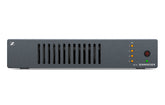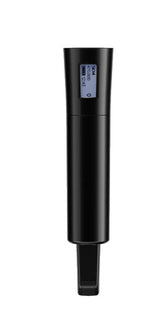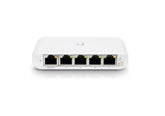The Ultimate Guide to Setting Up a Secure Wi-Fi Network
Introduction: Why Wi-Fi Security Matters More Than Ever
In today’s hyper-connected world, more than 5 billion Wi-Fi-enabled devices connect to the internet every day. Whether it’s smart TVs, laptops, smartphones, or security cameras, nearly everything in our homes and businesses relies on stable and secure wireless connectivity.
Yet, Wi-Fi remains a prime target for cyberattacks. Unsecured or poorly configured networks can expose sensitive data, allow unauthorized access, and disrupt AV systems or surveillance infrastructure. In the AV, networking, and surveillance industries, where uptime and data integrity are essential, securing your network is a non-negotiable priority.
This guide offers a comprehensive, step-by-step breakdown of how to set up a secure Wi-Fi network. From choosing the right hardware to advanced encryption and access control, we cover the tools and best practices you need to stay safe, fast, and future-ready.
What Is a Secure Wi-Fi Network?
A secure Wi-Fi network is a wireless internet connection that is protected from unauthorized access, data breaches, and other cyber threats using encryption, authentication protocols, and security policies.
Key features of a secure Wi-Fi network:
-
Encryption protocols like WPA3 or WPA2
-
Strong password policies
-
Device access control and segmentation
-
Firmware updates and patching
-
Firewall and network monitoring tools
Why it’s important:
-
Prevents data theft and unauthorized access
-
Protects business-critical systems like POS terminals, AV gear, and surveillance cameras
-
Enables compliance with data protection standards (e.g., PCI-DSS, HIPAA)
-
Improves network performance and reliability
A secure network is the foundation of any modern connected environment—especially in AV-heavy spaces where bandwidth and reliability are critical.
Benefits and Use Cases
Protects Personal and Business Data
A secured Wi-Fi network prevents hackers from stealing sensitive information like passwords, credit card numbers, and proprietary business data.
Use Case: A retailer uses segmented and encrypted Wi-Fi networks to isolate payment processing systems from guest devices.
Prevents Device Hijacking
Unsecured Wi-Fi can allow attackers to hijack smart devices, including surveillance cameras and voice assistants.
Use Case: A homeowner secures their network to prevent outside access to indoor security cameras and baby monitors.
Maintains AV System Stability
Strong network security reduces interference, bandwidth misuse, and outages for AV systems.
Use Case: A conference center segments its AV traffic from guest Wi-Fi to maintain uninterrupted video streaming and presentations.
Enables Remote Work and Secure IoT
Businesses supporting hybrid work or IoT deployments rely on secure Wi-Fi to ensure access without exposing internal systems.
Use Case: A small business enables remote access to surveillance footage and inventory systems while keeping backend servers safe.
Challenges and Considerations
Weak or Default Passwords
Many users never change default router credentials, making them vulnerable to brute-force attacks.
Solution: Use strong, unique passwords and change them regularly.
Outdated Equipment
Older routers may not support modern encryption protocols, leaving networks exposed.
Solution: Upgrade to routers that support WPA3 encryption and firmware updates.
Overloaded Networks
Excessive device connections or lack of traffic segmentation can slow down performance and increase risk.
Solution: Implement guest networks and VLANs to isolate traffic.
Poor Placement and Coverage Gaps
Weak signal areas can encourage users to disable encryption or use repeaters with minimal security.
Solution: Use mesh Wi-Fi systems or enterprise-grade access points with strong coverage and security features.
How to Set Up a Secure Wi-Fi Network: Best Practices
Step 1: Choose a Secure Router
Select a router that offers:
-
WPA3 support (or WPA2 as a minimum)
-
Automatic firmware updates
-
Guest network capability
-
Firewall and traffic monitoring features
-
VLAN and QoS support for AV applications
For businesses and AV-intensive environments, consider business-grade routers and PoE-enabled access points for better scalability.
Step 2: Change Default Credentials Immediately
-
Change the default admin username and password
-
Use complex passwords with a mix of letters, numbers, and symbols
-
Avoid reusing passwords from other accounts
Step 3: Enable the Highest Level of Encryption
-
Use WPA3 where available
-
Avoid outdated encryption types like WEP or open networks
-
For guest access, enable WPA2 and restrict device visibility
Step 4: Create a Separate Guest Network
-
Isolate guest Wi-Fi from internal networks
-
Set bandwidth limits for guests
-
Disable device-to-device communication on guest SSIDs
Step 5: Use Strong Network Naming Conventions
-
Avoid using your name, address, or company name in SSIDs
-
Disable SSID broadcasting if anonymity is desired
-
Use different SSIDs for employee and admin networks
Step 6: Enable Network Firewalls and Monitoring
-
Use your router’s built-in firewall
-
Enable DoS protection and port filtering
-
Monitor connected devices and block unknown IPs or MAC addresses
Step 7: Keep Your Firmware and Devices Updated
-
Enable automatic firmware updates on routers
-
Regularly update connected devices like printers, AV systems, and IoT gadgets
-
Subscribe to manufacturer alerts for vulnerabilities
Step 8: Enable Device Access Control
-
Use MAC address filtering where applicable
-
Use role-based access controls for enterprise networks
-
Deauthorize inactive devices
Step 9: Segment Traffic with VLANs (for Businesses)
-
Separate IoT, surveillance, and POS systems from staff or guest traffic
-
Assign bandwidth priorities using QoS (Quality of Service)
-
Improve both performance and security through segmentation
Step 10: Use VPNs for Remote Access
-
Set up a VPN for secure remote access to files, surveillance footage, or AV controls
-
Avoid accessing your home or business network over public Wi-Fi without encryption
Conclusion: Protecting Your Wi-Fi Is Protecting Your Business
Wi-Fi isn’t just a convenience anymore—it’s the lifeline of modern homes and businesses. From AV systems and security cameras to cloud services and hybrid work environments, your entire digital ecosystem depends on a secure, reliable wireless connection.
By following the steps outlined in this guide—from selecting the right hardware to applying segmentation and encryption—you can significantly reduce your vulnerability to cyber threats while improving performance across devices.
Ready to upgrade your network?
Explore our collection of networking products, AV solutions, and smart surveillance systems to power and protect your connected environment.











